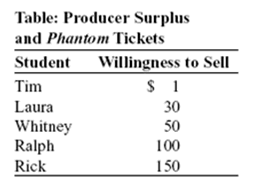Keynesians tend to not believe in the stability of free markets
Indicate whether the statement is true or false
True
You might also like to view...
What happens to the demand curve when a nonprice determinant of demand changes?
A. The demand curve shifts horizontally. B. There is a movement along the demand curve. C. The consumer moves to a different price point. D. Nothing changes with the demand curve.
The nation's largest cable TV company tested the effect of a price reduction for premium movie channels. It increased prices from $20 to $30 per month and found virtually no change in the number of customers. This means: a. the demand curve for the premium movie channels shifted to the right
b. the supply curve for premium movie channels shifted to the left. c. the demand for premium movie channels is very elastic in this price range. d. the demand for premium movie channels is very inelastic in this price range.
The first formal acknowledgement of the primary macroeconomic goals of price stability, high employment, and promoting economic growth in the United States came with passage of the: a. Federal Reserve Act of 1913
b. the Sherman Antitrust Act of 1890. c. the Social Security Act of 1935. d. the Employment Act of 1946.
(Ref 8-7 Table: Producer Surplus and Phantom Tickets) The table Producer Surplus and Phantom Tickets shows the minimum price at which each of the students is willing to sell a ticket to Phantom of the Opera. Assume that each student has only one ticket to sell. Given the information in the table, if these students can sell their Phantom tickets for only $5, then:

A. the total producer surplus for the five students will be $330.
B. Tim will be the only student not to sell his ticket.
C. the total producer surplus for the five students will be $4.
D. Whitney, Ralph, and Rick will sell their tickets.